My friend Liz asked:
Do Catholics have a “priesthood?” If so, how is it used and who is given it?
The short answer is this: Yes, Catholicism has a priesthood. Catholic priests are celibate men who experience a calling to a vocation in the priesthood. They attend seminary and are ordained priests, able to administer sacraments and perform other duties involved in ministering to a parish community.
And now the longer answer:
As I understand it, the process of becoming a priest basically begins with a man experiencing a call to serve God in the priesthood. Usually he prays quite a bit about this to discern if this is his true path and may meet with a spiritual or vocations director to assist with this discernment. He obtains a college degree, then goes to seminary. I’m not sure of the sequence of events, exactly, but a candidate for the priesthood also has to at some point undergo quite a bit of interviewing, background checks, and psychological and medical assessments before he can be ordained and assigned to a parish.
There are three levels of ordination in the sacrament of Holy Orders (the sacrament by which a man is ordained). The first level is the episcopate. This is the ordination of a bishop. A bishop is ordained by other bishops and stands in a direct, unbroken line from the apostles. All episcopal ordinations must be approved by the pope.
The second level of ordination is the priesthood. This is what people typically think of when they think of a Catholic priest. There are not enough bishops to minister to all the people in a diocese, so lay priests carry out this duty. Priests exercise their powers only in communion with their bishop. In fact, during their ordination they vow to maintain obedience to their bishop (there are also priests who are ordained to particular orders such as the Dominicans or Franciscans, and I believe that their vows are a bit different in that they are obligated to obey their order, rather than the bishop of the diocese, and their duties can be quite different too, but I’m less familiar with this type of ordination, so I’m just going to leave it at that).
The third level is the diaconate. A man can be ordained as a transitional deacon while on his way to becoming a priest, or as a permanent deacon. A permanent deacon can be married, but a transitional deacon must remain celibate, as he is preparing to become a fully ordained priest.
^^ From left to right, a seminarian, a priest, and a deacon ^^
When a man receives the sacrament of Holy Orders, the bishop lays hands on him and says a consecratory prayer asking God for the outpouring of the Holy Spirit and for the gifts to fulfill the duties specific to his ministry. Once a man has been ordained a priest, he is spiritually changed and he is granted special graces according to his level of ordination.
Deacons can read the Gospel during Mass, preach a homily, and perform the sacraments of baptism and marriage.
Priests can perform all the duties of deacons as well as being given the special ability to act in persona Christi, or in the person of Christ. This is the way in which priests are able to administer the sacrament of the Eucharist, by consecrating the bread and water and turning them into the real presence of Christ, His body and blood, through transubstantiation during the Mass. Priests are also able to act in the person of Christ when they administer the sacrament of reconciliation. Priests can also administer the sacrament of anointing of the sick and sometimes the sacrament of confirmation, as in cases of adults who are confirmed at the Easter Vigil (like I was).
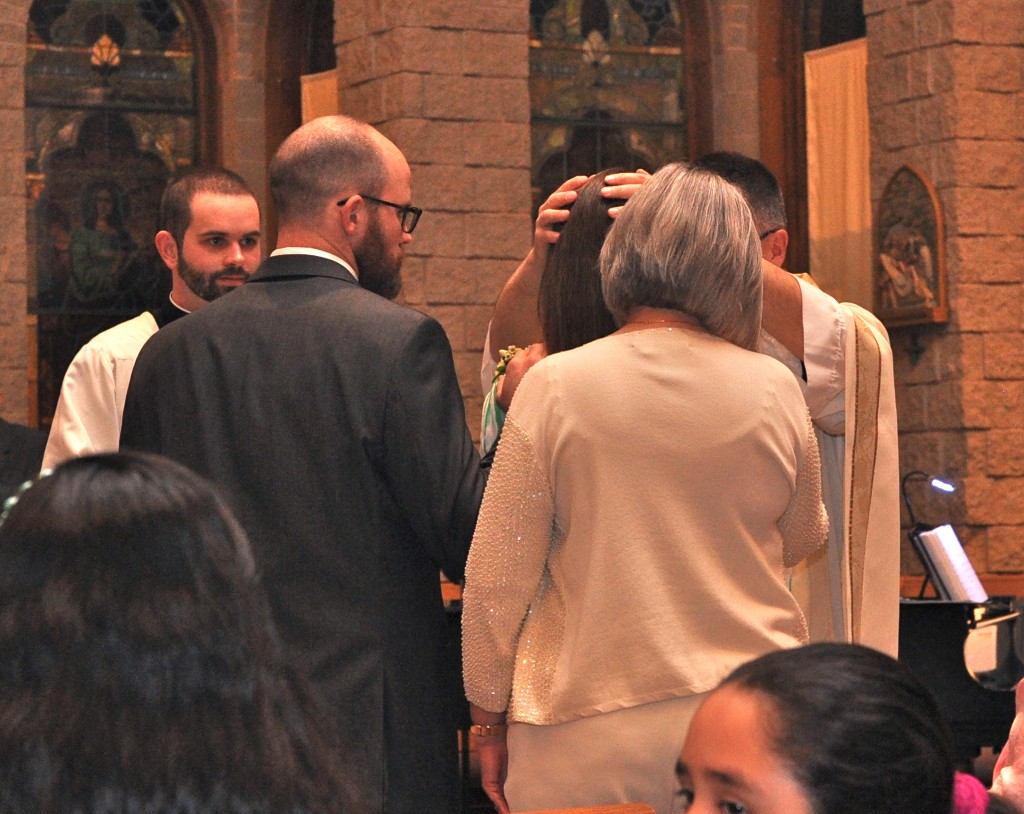 ^^ That’s me with our priest’s hands on my head during part of my confirmation ^^
^^ That’s me with our priest’s hands on my head during part of my confirmation ^^
^^ Here he’s marking a cross on my forehead with Holy Chrism oil ^^
Bishops usually perform confirmations and they are the only ones who can perform the sacrament of Holy Orders.
This is just a quick summary of what bishops, deacons, and priests have the authority to do. Of course, they have many other duties and responsibilities in their positions as well as administering sacraments and preaching during Mass.
Some people get upset by the fact that only men can be ordained as priests in the Catholic Church. The reason for this is that priests are acting in the person of Christ, and Christ was a man, obviously. The Catholic Church does not see men and woman as interchangeable, as some may argue they should be. Instead, the Church sees men an women as suited to different, yet complementary roles. Further, the ordination of men is a tradition that goes back to Christ Himself. He chose only men as His apostles.
The last issue I’ll mention about the priesthood is another thing that people seem to often misunderstand: celibacy. Priests and bishops are required to commit to lifelong celibacy as a prerequisite for ordination. Permanent deacons can be married when they become deacons, but I don’t think they can marry after they are ordained.
In our society, people are so inundated with the idea that it is unnatural to not have sex, whether married or not, that the idea of celibate priests is mocked and debased. People claim it is freakish to be celibate and usually do not bother to try to understand why the Church has this rule.
In fact, celibacy was not an original requirement of the apostles and early Catholic priests. In the early Church there were some problems, however with corruption and nepotism among priests, favoring their offspring and/or passing Church property to their spouses and children upon their death. In 1075, Pope Gregory VII issued a decree which effectively prohibited married priests from acting in the ministry. This was formalized by the First Lateran Council in 1123, and the Roman Catholic Church has required celibacy from priests ever since.
Consecrated celibacy is seen by the Church as a gift that God bestows on those called to the priesthood. It is a way for priests to be more like Jesus, to be more focused on their faith and duties. Saint Paul said, “I should like you to be free of anxieties. An unmarried man is anxious about the things of the Lord, how he may please the Lord. But a married man is anxious about the things of the world, how he may please his wife, and he is divided. An unmarried woman or a virgin is anxious about the things of the Lord, so that she may be holy in both body and spirit. A married woman, on the other hand, is anxious about the things of the world, how she may please her husband.” 1Corinthians 7:32-34
Liz, I hope that answers your question adequately 🙂
******
I’ve had a request to discuss confession, so that will be my next topic. What do you want to know about? The rosary? Saints? The Catholic Church’s stance on birth control?? Keep the questions coming!


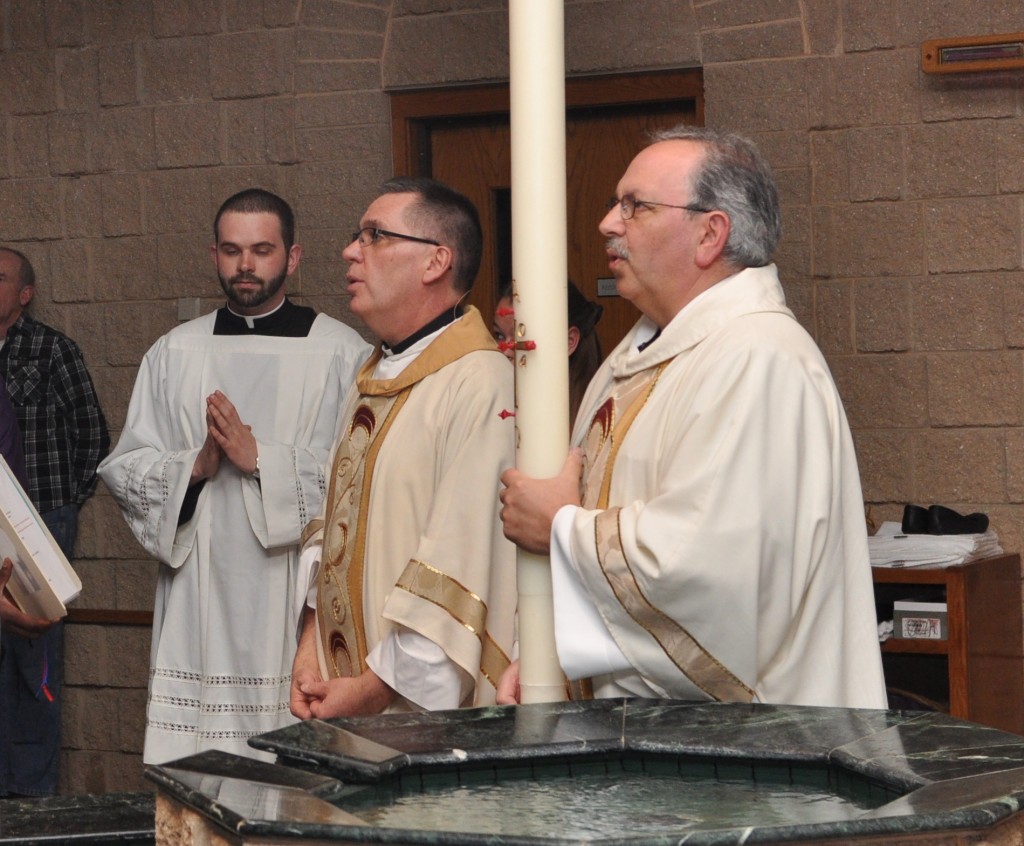

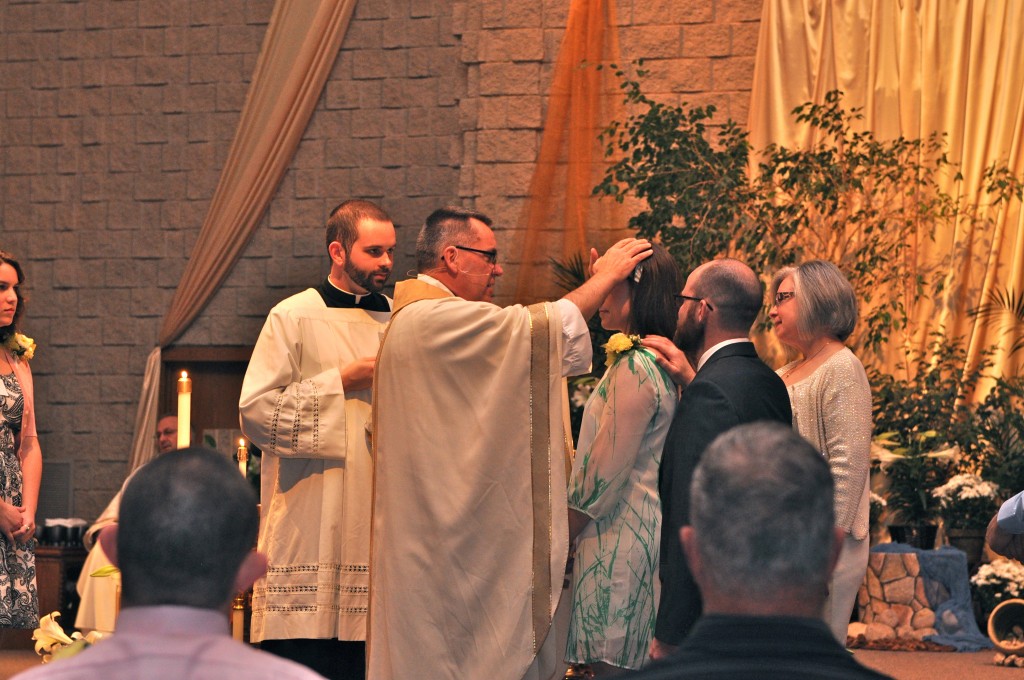
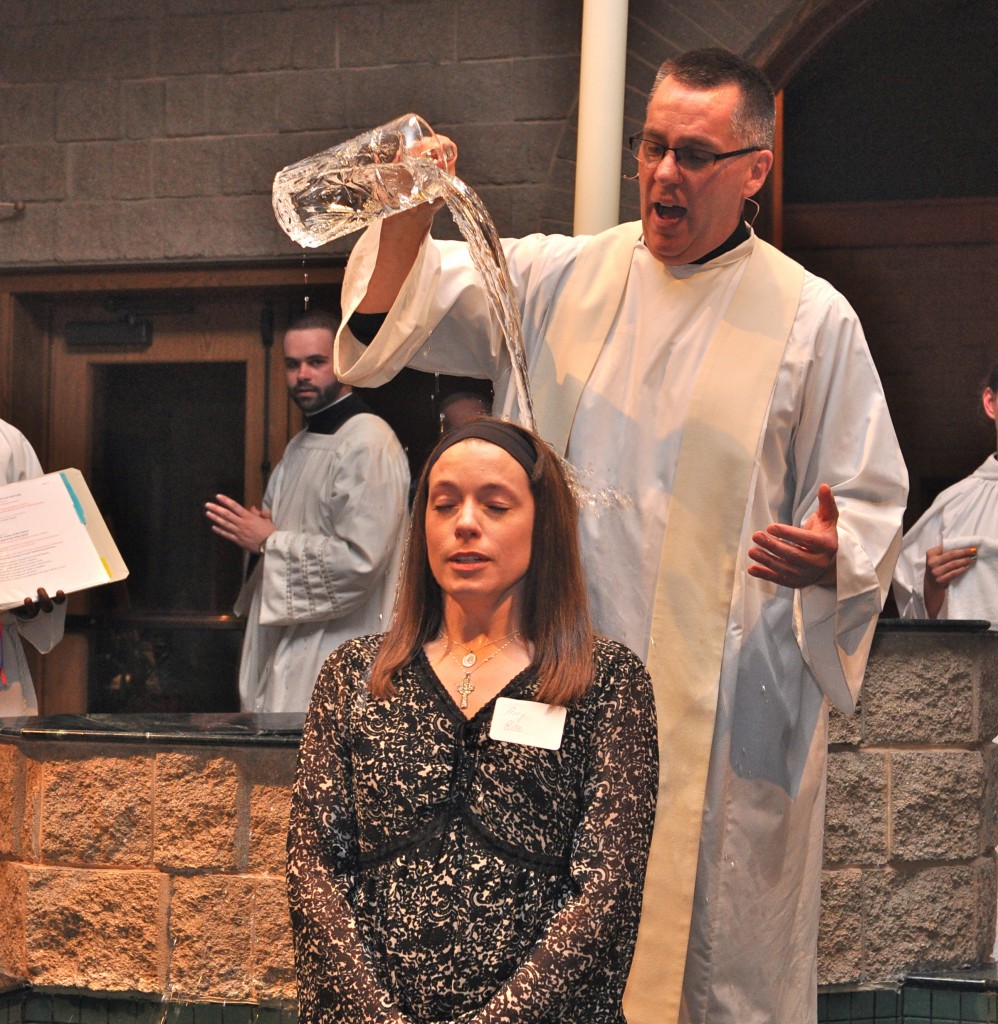
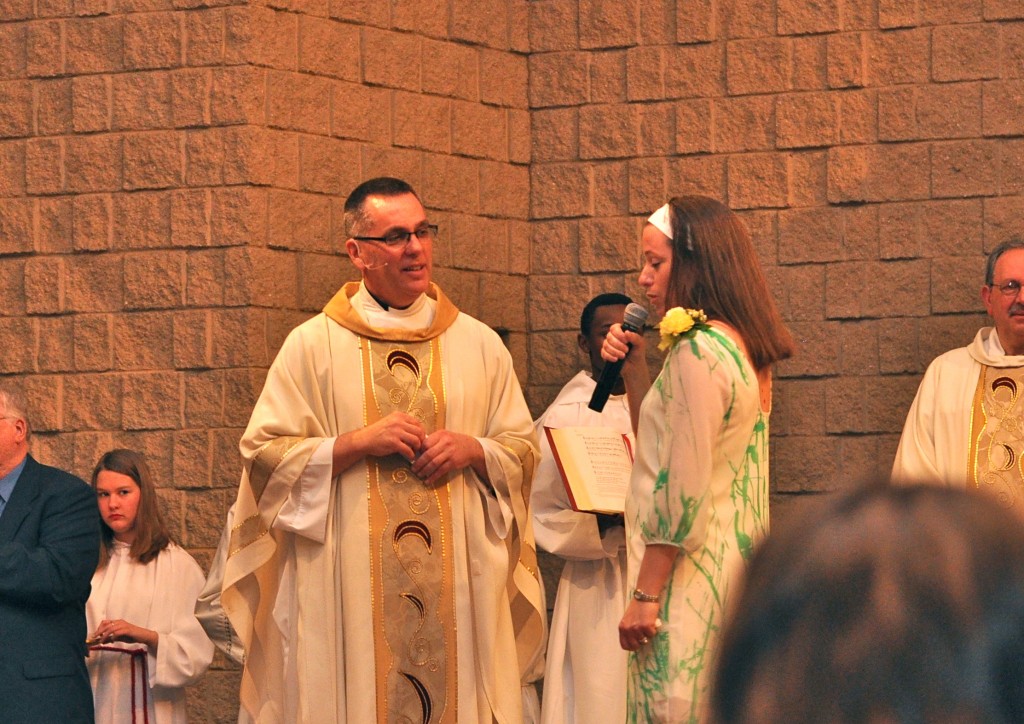

Yes! That does. I was fairly certain there was a priesthood and knew a little bit about celibacy at the highest levels, but I’m really glad you got into some of the deeper details (Bishop, Deacon, Priest responsibilities). I may even read it through again to be sure I understand it all. Thanks for entertaining my curiosities.
You’re welcome! I actually learned a lot from writing it too 🙂